FAQ
- Bolivia climbing questions
-
Mallorca island and rockclimbing
- What are main specifics of rockclimbing trip to Mallorca
- Mallorca island impressions
- Rockclimbing safety Spain
- Mallorca climbing accommodation
- What season is possible for rockclimbing in Mallorca
- Transport accessibility of climbing sectors in Mallorca
- Active vacation in Mallorca
- Saint Anthony night in Mallorca
- Peru climbing questions
- Gear reviews
- Safety in the mountains
- Health in the mountains
-
Elbrus questions
- Elbrus climbing gear
- Climbing Elbrus with children?
- Mount Elbrus location?
- Elbrus logistics
- How to get to Mount Elbrus?
- Elbrus German airfield?
- Elbrus difficulty grade
- What difficulties climbers will face in the process of climbing Mount Elbrus?
- How to prepare for Elbrus?
- Are there avalanches on Mount Elbrus?
- Is it possible to climb alone the highest mountain of the Caucasus and Europe - Elbrus?
- At what time of the year is it better to climb Elbrus?
- How long does climbing Elbrus last?
- Clothes for Mount Elbrus?
- Pressure at the top of Elbrus?
- Elbrus air temperature
- Elbrus sightseeing
- How much to climb Elbrus
- Gear questions
- Mountaineering questions
- Mountain climbing training
- Rockclimbing questions
- Horse riding tours
- Iceclimbing questions
-
Questions on the alpine programs
- Georgia 2023
- Pico Aneto - what is that mountain?
- Mountain climbing food ration
- Queries on the alpine program climbing Mount Bazarduzu
- Queries on the Kamchatka alpine program climbing
- What is combined program?
- What is Sightseeing program?
- What is pilot program?
- What programs you have of the medium complexity level?
- Basic expedition rations
- Prices for the mountain climbing programs
- Queries on the Mountain Course in Adyl Su valley
- Program complexity?
- Questions about MCS AlexClimb
- Questions related to trekking programs
Elbrus difficulty grade
Read in Telegram in English
Leer en Telegram en Español
My collection of routes to Elbrus is here
What is the difficulty grade of the Mount Elbrus climbing route?
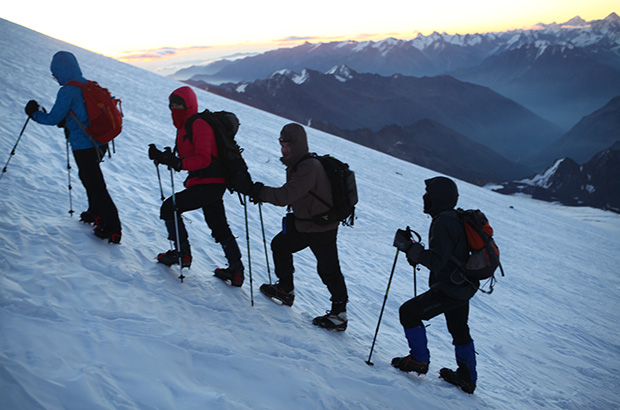
Climbing Mount Elbrus by the south slope
According to the Russian classification of the difficulty of the climbing routes, the difficulty grade (category) of the Mount Elbrus routes:
- West Elbrus by the south slope - 1b R.G. /PD- (UIAA),
- East Elbrus by the north slope - 2a R.G. /PD (UIAA),
- East Elbrus along the eastern lava flow - 2b R.G. / PD+ (UIAA),
- West Elbrus along the West slope - 3a R.G. / AD- (UIAA).
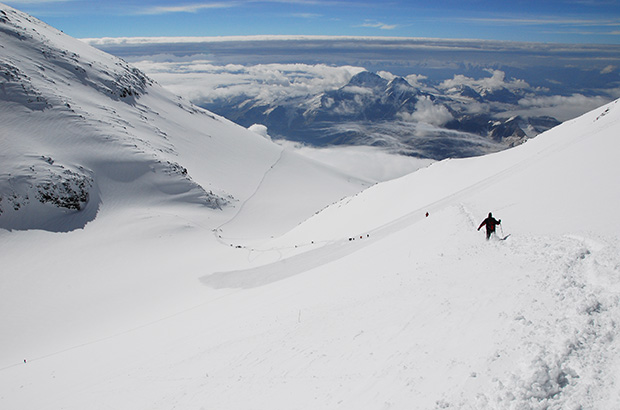
Ascent to the west Summit of Mount Elbrus from the Saddle. The photo shows an avalanche that broke the trail.
However, the concept of the category of difficulty on the example of the Mount Elbrus routes does not at all reflect the characteristic features of the route, it gives only a general idea of some abstract complexity. The category of difficulty, according to the current classification system, does not reflect either the specifics of the route or its seasonality.
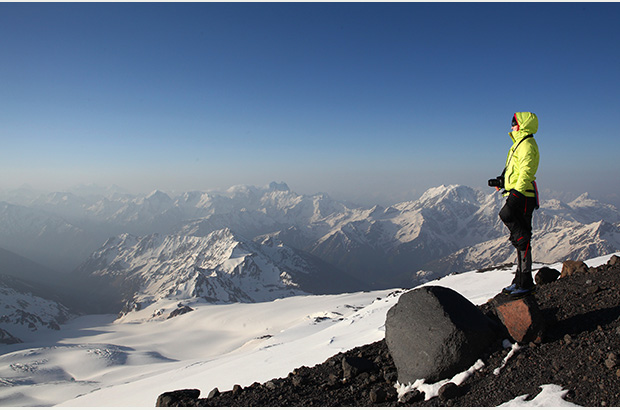
Climbing Mount Elbrus by the East slope
You can read more about the features and difficulties of climbing Elbrus in my article on this issue.
Here I would talk about the categories of difficulty of climbing routes, without delving into the specifics of any individual mountain.
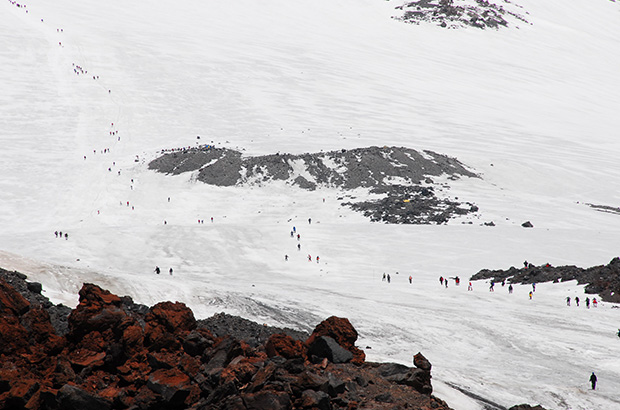
A huge number of people on the southern slope of Mount Elbrus
Let's see what is the category or grade of difficulty of a mountain route or peak. First, you need to understand that the concept of "difficulty" of the alpine climbing route is the extremely subjective thing. In the Russian classification system, which has flowed to us almost unchanged from its Soviet predecessor, the category of difficulty is assessed by the total length of the climbing sections, their complexity, the need to use protection, the average climbing time, etc.
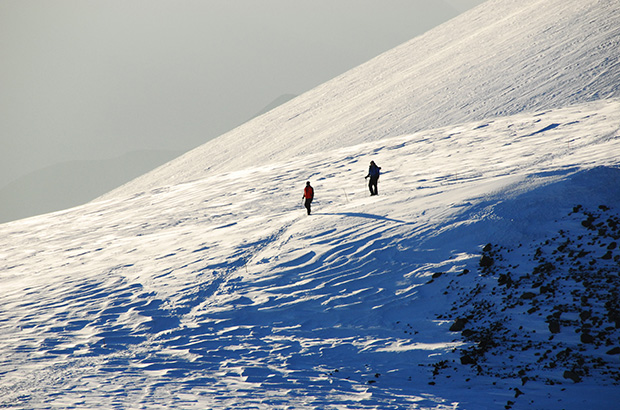
Ascent to the west Summit of Mount Elbrus from the summit Plateau
Literally, the following factors determine the category of difficulty of a climbing route (quote from RISK.RU):
“To routes 1B k.t. (Russian Grade)/ PD- include routes of ascents and traverses of rocky, snow-ice and combined nature to mountain tops of the altitude from 500 m to 5000 m above sea level, with an average length of 500 m, and an average steepness of 10-25 °.
The routes mainly consist of the very easy sections, but should include 20-30 m or more sections of grade I - easy difficulty or have several short (3-15 m) rock sections of grade II - easy difficulty, or 80-100 m and more snow-ice sections of grade I - easy difficulty, or have short (30-40 m) sections of grade II - easy difficulty. The duration of the route should be from 1.5 to 5-8 hours. In case of mass ascents, you may need stationary belay.
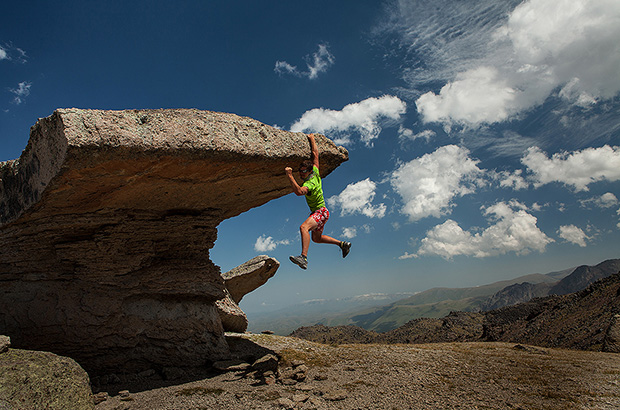
Exercises for those who lack the climbing difficulty on the Elbrus route. North slope
All these factors are not objective. A simple example: I have repeatedly seen people for whom the movement on a slope of 15 degrees was a serious difficulty, although for a normal person this slope should not cause problems when moving. Accordingly, the complexity of the terrain in this case cannot be assessed objectively - it depends on the physical fitness and coordination of the climber.
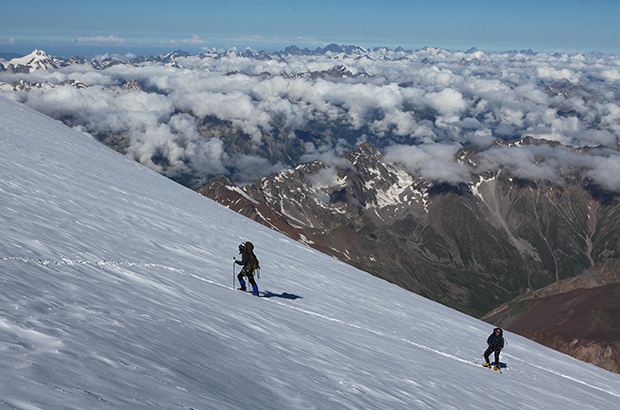
Climbing Mount Elbrus by the east slope. Slope steepness is approx. 10-15°
Next is the approximate climbing time. The speed record for climbing Mount Elbrus is only 48 minutes, despite the fact that the average climbing time is more than 8 hours. Such a difference tells us that the route climbing time cannot be a criterion for assessing its difficulty. As well as the need for belay - for some climbers, the protection will be required on the easiest sections, and others can move so comfortably and confidently on the more difficult terrain that there is no need to organize any protection.
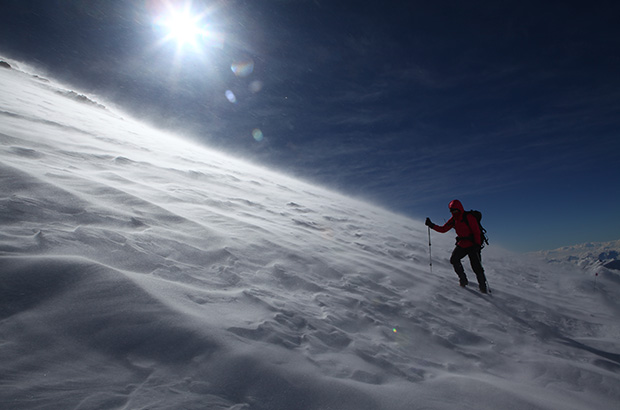
Stormy wind is one of the particular difficulties or dangers when climbing Mount Elbrus
The issue of the classification of mountain climbing routes is a very complex and often controversial topic.
For example, in rockclimbing everything is simple and clear with difficulty categories in any classification system. The rockclimbing route is evaluated by a quorum of climbers and has a fairly accurate estimate of difficulty, which is well felt with experience at the level of half of the category (+/-). The difficulty rating of a rockclimbing routes does not change depending on the weather, air temperature, physical condition of the rockclimber - agree, no one climbs the rocks in poor health, or in inappropriate weather or season.
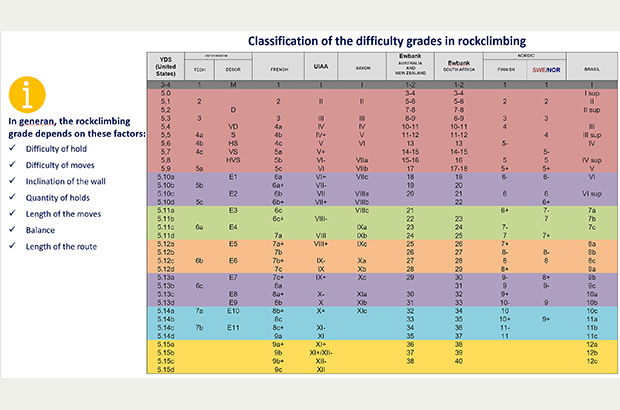
Comparative table of different systems for assessing the difficulty in rockclimbing. The French system is adopted in Russia and the most European countries.
With the alpine climbing routes in the mountains, everything is more difficult. A simple example. Technical climbing routes of a rocky class, to the peaks of only 500-600 m high, can have an alpine (not to be confused with rockclimbing) category AD- the same as mount Elbrus route from the east, which altitude is 5642 m.
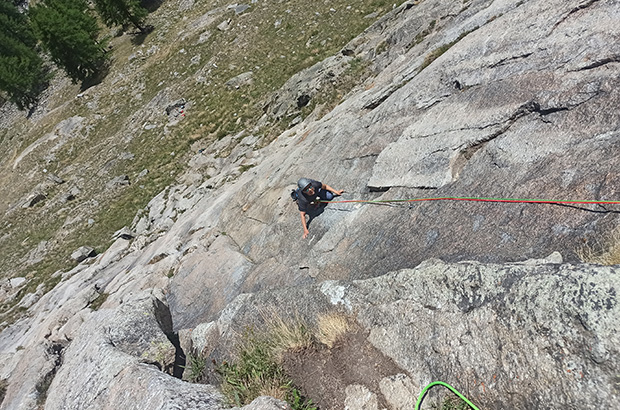
Climbing a rockclimbing alpine route of the category AD- in the El Paraiso National park in Northern Italy
These routes will not have vertical walls and steep ice slopes, but there will be a risk of fall and the need to organize basic rope protection. On the Mount Elbrus route of the same category, there are such complicating factors as lack of oxygen, low temperature, unstable weather.
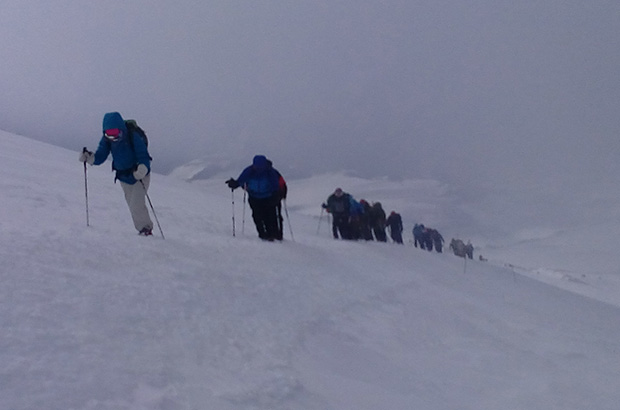
Climbing Mount Elbrus
Moreover, these factors cannot be planned and taken into account in an objective assessment of the complexity of the alpine climbing route within a single system. As an example, I can cite the ascent to one of the rocks, which is popular for climbers, in the Crimea. The height of the "Tower" rock is only 610 m above sea level, but the category of difficulty, according to the present classification, is the same as that of the route to Mount Elbrus - PD+.
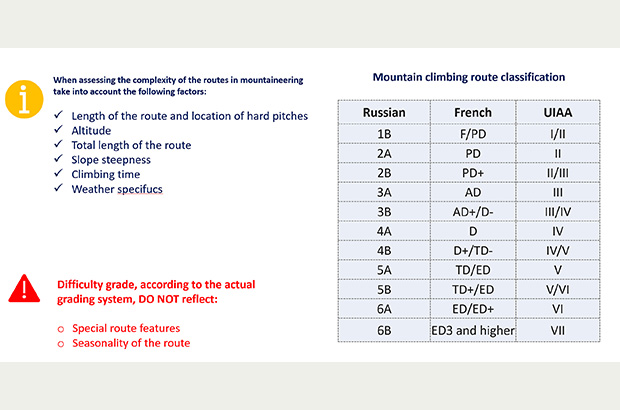
Comparison table of international alpine climbing (mountaineering) categories
The category of difficulty of the alpine climbing route is given approximately, without specifying seasonality, altitude and weather conditions. In addition, there are numerous regional features that affect the complexity of the route - the characteristic features of the relief, the specifics of weather conditions - these factors cannot be taken into account in the existing classification system, although often they determine the actual complexity of the route.
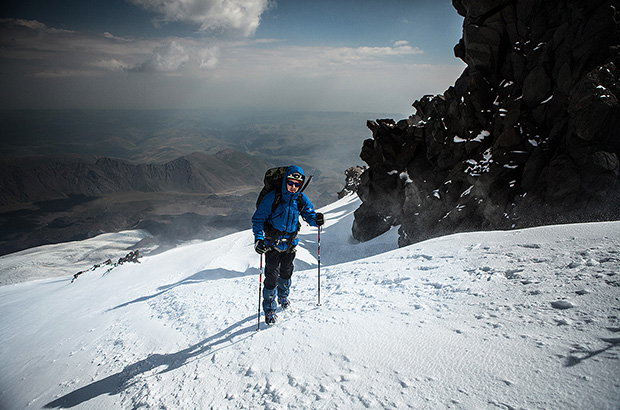
Climbing Mount Elbrus from the north - the strongest wind instantly blocks the trail with snow
On the example of Mount Elbrus, I can say that the complexity of the route can change dramatically depending on the season and conditions. The snow slope mentioned above, with a steepness of 15˚, does not present any difficulties during the summer season. But it can turn into the most difficult and very dangerous technical obstacle in the winter state, when the wind blows snow off the slope and bare hard ice is exposed.
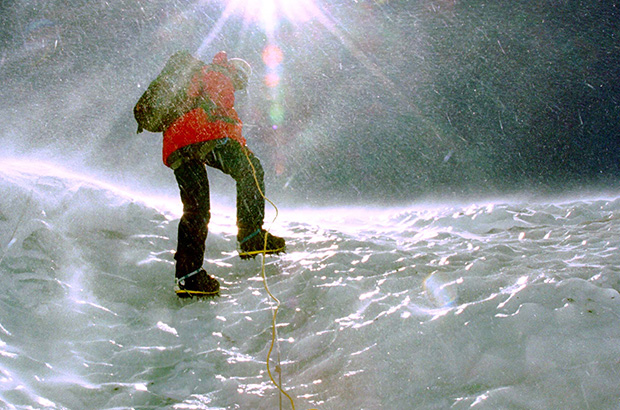
Bottle ice on Mount Elbrus, very hard and polished by snow and wind
Such a spread of actual difficulty within one declared category makes it almost impossible to evaluate and compare mountain climbing results, for example, when trying to organize mountaineering competitions. The variability of climbing conditions, countless factors that can change the complexity of the climbing obstacles in a wide range, do not allow mountaineering to be treated as a competitive sport.
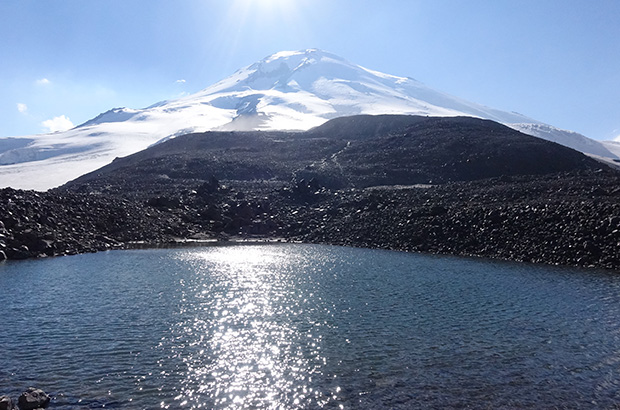
East route of Mount Elbrus - view from the high camp 3900 m.
In order to compete in something, the obstacle or sports facility must be the same for all competitors - without this it is impossible to evaluate the results of the competition.
Thus, one should be guided by the declared category of the route complexity only in the most general terms. It should be added that regardless of the category of difficulty, any mountain route poses a serious danger in case of insufficient tactical and technical training of the participants, overestimation of their strength.
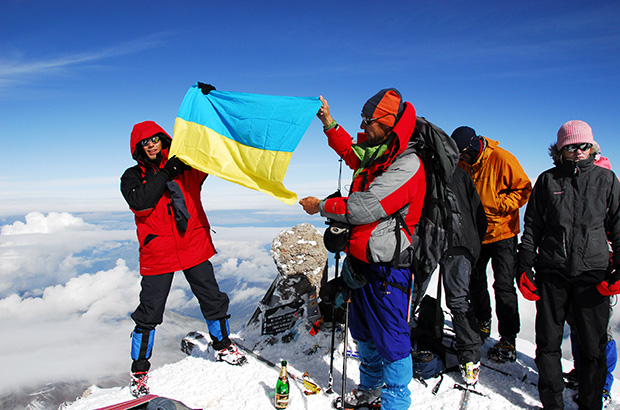
On top of Mount Elbrus with a team of Ukrainian climbers
There is a phenomenon in Russian mountaineering that is not characteristic of the world practice of mountain climbing. This trend is not found in other countries, except for Russia - it is a "pursuit of categories" or "climbing for a checkbox." The origin of this phenomenon is rooted in the Soviet past, when for the achievements in any sport, the citizens of the USSR received significant bonuses in the form of the free tickets and paid vacations, promotion in the social hierarchy and even career achievements.
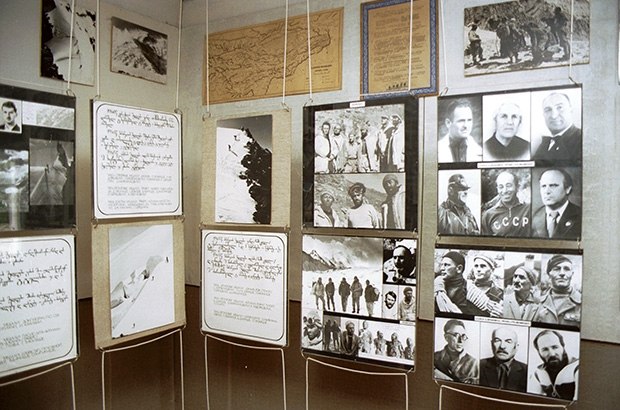
A stand dedicated to the achievements of Soviet mountaineering at the M. Khergiani Museum in Georgia
For the convenience of regulation and management, an active form of leisure, popular all over the world - mountaineering, was classified in the USSR as a sport, with the assignment of all related attributes - the creation of management organizations, classification of routes and achievements, holding competitions, awarding regalia, etc.
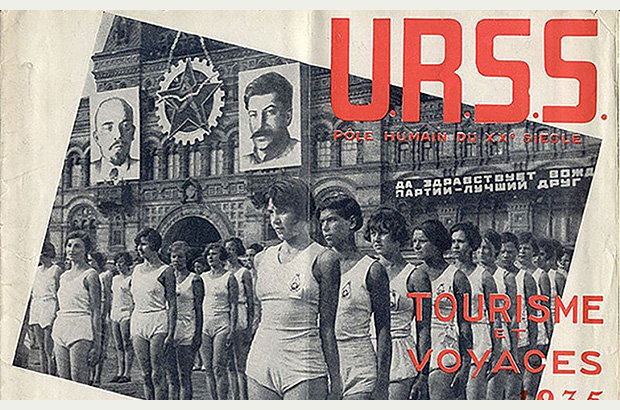
In the USSR, sports and tourism were completely controlled and regulated by the state
Psychologically, the dependence of a Soviet person on the availability of various documents and regalia was extremely high - social status in the Soviet Union was documented and often had no connection with the actual achievements. Remnants of this bureaucratic system can be observed in the modern system of Russian mountaineering.

At least 5 generations of Soviet people grew up in awe of badges and regalia
Despite the fact that the presence of confirmed regalia in mountaineering today does not bring any practical bonuses to the citizens, many of them, nevertheless, strive to climb not so much mountain peaks as climb the formal ladder of categories.
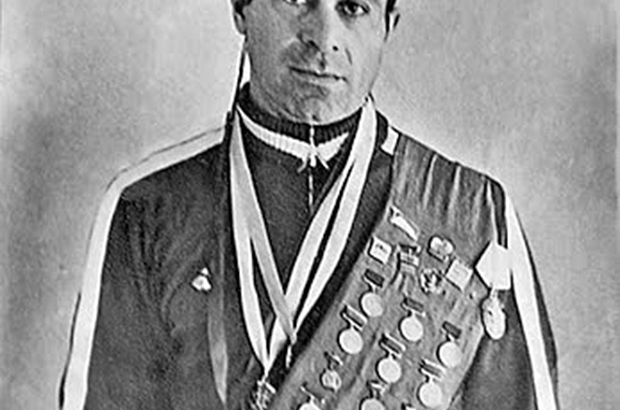
Famous Soviet climber Mikhail Khergiani and his collection of mountaineering regalia
This approach to the mountain climbing can be called formalism. In my opinion, this is one of the three incorrect and dangerous motivations in mountaineering, often leading to the saddest consequences: formalism, heroism and vanity.
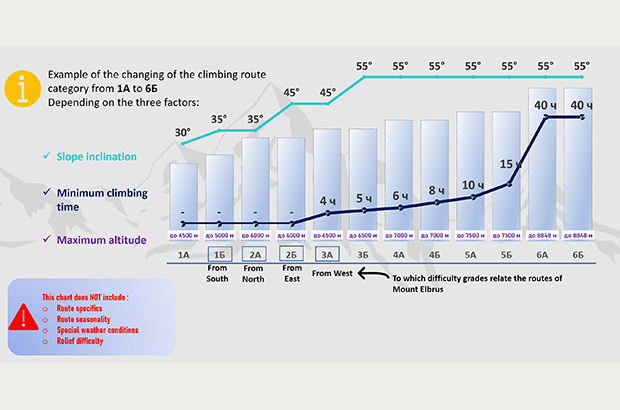
Scheme of the formation of the category of difficulty in mountaineering, depending on the various factors
Returning to the question of the categories of Mount Elbrus routes, it must be added that all the routes to this mountain, without any pronounced technical difficulties, are very physically difficult, long and tactically complex ascent lines.
.jpg)
Climbing Mount Elbrus
Physical loads for climbing Mount Elbrus do not correspond to the declared categories, which reflect only the absence of technical difficulties. But, if the category of the route is more important to you than the Mountain, in this case it is better to opt for much simpler and safer routes that do not require as much effort as climbing Mount Elbrus.
The author of the texts and photographs Alex Trubachev
Your professional mountain guide for Mount Elbrus and other mountain climbing routes in Caucasus
MCS EDIT 2024
Our Principles
AlexClimb Rule #1 - Safety First
From the very beginning of our activity, here nearly 16 years, the first Principle of work of School of mountaineering and rock-climbing of MCS AlexClimb is the Safety Priority. On the basis of this Principle all process of training is based, all programs and rounds are developed and carried out only within this main principle. We consider that at professional approach to development of programs, at personal discipline and correctly put motivation - occupations by mountaineering and rock-climbing are COMPLETELY safe. And from the return - all troubles and accidents in our sport come from nonprofessionalism, from ignorance or neglect by elementary standards of safety, from irrational motivation, from revaluation of own forces and opportunities. All these prerequisites we COMPLETELY EXCLUDE in our work - ours Rock-climbing, Ice climbing and Mountaineering are based on one Principle - the Safety Priority. In rock-climbing, mountaineering and ice climbing, the Priority of Safety of MCS AlexClimb-is your personal security and comfort irrespective of, than we are engaged - we train muscles and we work technology of the movement in the sports hall and on the rock climbing wall, we make the way through snowstorm to top or we relax on golden sand of the Caribbean beach after hot day of trainings on rocks. The Safety priority - the main credo of School of mountaineering and rock-climbing of MCS AlexClimb.
AlexClimb Rule #2 - Leave No Trace
Closely interacting with Nature, working with the active programs in mountains, woods, lakes and rivers, we perfectly understand the importance of carefull and respectfull bahavior towards the Nature, for its resources. From the very beginning of our outdoor-activity we adopted rules of Leave No Trace technique - the standard of behavior of the person accepted in all the civilized world in relation to environment and especially - to the wild nature. After all on the relation of people to the nature near which they exist, itself can draw dalekoidushchy conclusions on the relation of these people to... Where and as we didn't travel - we don't reserve any garbage, we try to reduce whenever possible our influence on environment to a minimum. We clear earlier zagryazyonny tourist parking of the left garbage, we take out and we take out to utilization places that to us other people left there. We consider that only thus, at personal individual consciousness of each citizen, each tourist, climber or autotraveller, we will be able to keep the nature surrounding us in its state, natural, suitable for life, - in it pledge of the healthy future for ourselves and our children.





